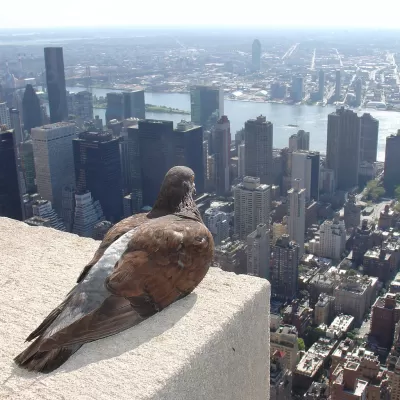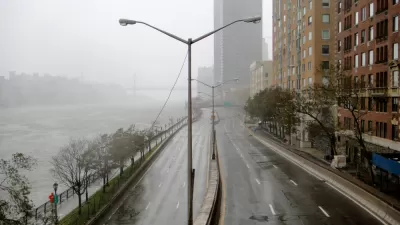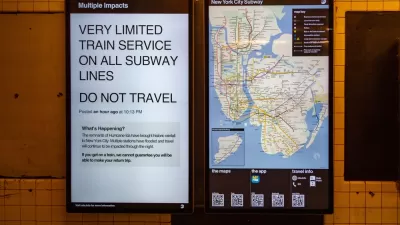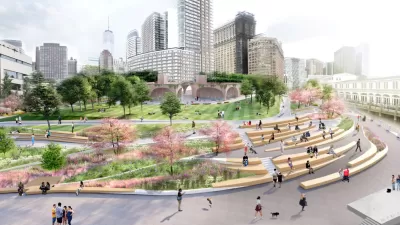New York, like every other city in the United States, isn't more prepared for a major storm event than it was on October 29, 2012.

Five years after Superstorn Sandy, the splashy and widely referenced "The Big U" plan is still "just lines on paper" according to an article by Robert Lewis.
You probably remember the Big U—"a 10-mile U-shaped barrier from 57th Street on the west side, down the battery and up the east side to 42nd Street," writes Lewis. "It was supposed to feature public art space and stunning new parkland."
A first phase of the Big U, the East Side Coastal Resiliency Project, has $335 in funding from the federal government, but the "groundbreaking has been delayed by at least 18 months, and already some of the amenities promised to the community have been removed to cut costs."
According to Lewis, the Big U is not the only project that emerged in the days and months following Superstorm Sandy that seems to have sputtered out of political favor. In fact, the assessment looks a lot like the city of New York and the surrounding region is no more prepared for an extreme weather even than it was when Superstorm Sandy slammed ashore exactly five years ago today. That dire assessment about the overall state of resilience in New York, as well as the rest of the country, is echoed by another article by the Associated Press, if you're looking for more.
FULL STORY: Why 'The Big U' Storm Barrier Could End Up as 'Half a J'

Alabama: Trump Terminates Settlements for Black Communities Harmed By Raw Sewage
Trump deemed the landmark civil rights agreement “illegal DEI and environmental justice policy.”

Study: Maui’s Plan to Convert Vacation Rentals to Long-Term Housing Could Cause Nearly $1 Billion Economic Loss
The plan would reduce visitor accommodation by 25% resulting in 1,900 jobs lost.

Why Should We Subsidize Public Transportation?
Many public transit agencies face financial stress due to rising costs, declining fare revenue, and declining subsidies. Transit advocates must provide a strong business case for increasing public transit funding.

Paris Bike Boom Leads to Steep Drop in Air Pollution
The French city’s air quality has improved dramatically in the past 20 years, coinciding with a growth in cycling.

Why Housing Costs More to Build in California Than in Texas
Hard costs like labor and materials combined with ‘soft’ costs such as permitting make building in the San Francisco Bay Area almost three times as costly as in Texas cities.

San Diego County Sees a Rise in Urban Coyotes
San Diego County experiences a rise in urban coyotes, as sightings become prevalent throughout its urban neighbourhoods and surrounding areas.
Urban Design for Planners 1: Software Tools
This six-course series explores essential urban design concepts using open source software and equips planners with the tools they need to participate fully in the urban design process.
Planning for Universal Design
Learn the tools for implementing Universal Design in planning regulations.
Smith Gee Studio
Alamo Area Metropolitan Planning Organization
City of Santa Clarita
Institute for Housing and Urban Development Studies (IHS)
City of Grandview
Harvard GSD Executive Education
Toledo-Lucas County Plan Commissions
Salt Lake City
NYU Wagner Graduate School of Public Service





























